Die Altstadt von Palma de Mallorca ist vor allem für ihre schmalen, verwinkelten Gässchen bekannt, deren charmanter Flair jeden Besucher in seinen Bann zieht. Noch dazu gibt es nahezu hinter jeder Ecke ein imposantes Highlight zu entdecken.
Wer die kleinen Ortschaften auf Mallorca kennt, wird auch vom Erscheinungsbild von Mallorcas Hauptstadt nicht überrascht sein. In Palma findet man dieselben schmalen Gässchen, dieselben charmanten Häuser aus Naturstein, dieselben Farbtupfer prächtiger Bougainvilleas und damit denselben mediterranen Flair – nur etwas weitläufiger, pompöser und belebter.
Die malerische Altstadt von Palma de Mallorca ist eine vereinnahmende Mischung aus spanisch-katalanischer und arabischer Architektur. Die vielen engen Gassen sind teilweise nur durch Treppen miteinander verbunden, weswegen die Altstadt von Palma auch idealerweise zu Fuß erkundet wird und zum Großteil völlig autofrei ist.
Inhaltsverzeichnis
Catedral La Seu

Das größte Highlight von Palma de Mallorca ist natürlich seine Kathedrale, die Catedral La Seu. Thront sie in allmächtiger Präsenz über der Uferpromenade von Palma, so sind ihre Türme in den verwinkelten Gassen nur hie und da zwischen den Dächern auszumachen. Wer vor ihren mächtigen Mauern steht, kommt aus dem Staunen kaum heraus.
Palau de l’Almudaina

Gleich neben der Kathedrale von Palma liegt der wuchtige Palast, in dem der König von Spanien residierte, wenn er auf Mallorca weilt. Ursprünglich wurde er schon von den Mauren als Festung und Residenz erbaut, von deren Bau ist jedoch nach der Erweiterung durch König Jaume II. zum Majestätspalast nicht viel übrige geblieben. Mittlerweile dient er als Sitz der Militärkommandatur von Mallorca.
Die Gemächer der spanischen Hoheiten wurden mit flämischen Wandteppichen und kostbarem Mobiliar verschiedenster Epochen zum Museum umfunktioniert. Im Hof kann die gotische Kapelle Santa Ana besichtigt werden.
Parc de la Mar
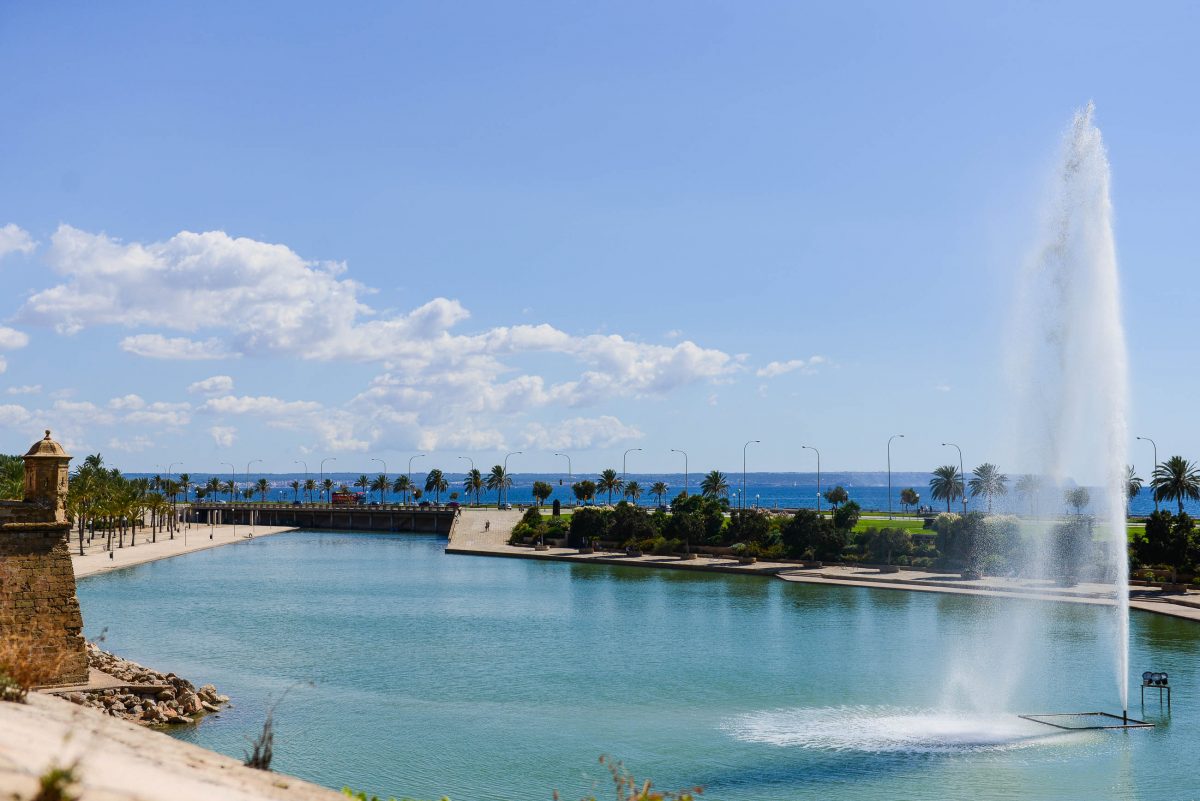
Der idyllische „Meerespark“ liegt direkt zwischen der Uferpromenade und der Kathedrale von Palma. Der künstliche See im Parc de la Mer ist eigentlich ein Meereskanal, der inklusive Springbrunnen eine angenehme Kühle verbreitet. An seinem Ufer laden einige, von unzähligen Palmen beschattete Bänke zum Flanieren und Verweilen ein.
Von der gegenüberliegenden Seite tut sich ein eindrucksvoller Panoramablick auf die Kathedrale und den Palau de l’Almudaina auf. Auf dieser Seite ist auch das farbenfrohe Wandbild des spanischen Malers Joan Miró, der seine letzten Lebensjahre in Palma de Mallorca verbrachte.
La Llotja
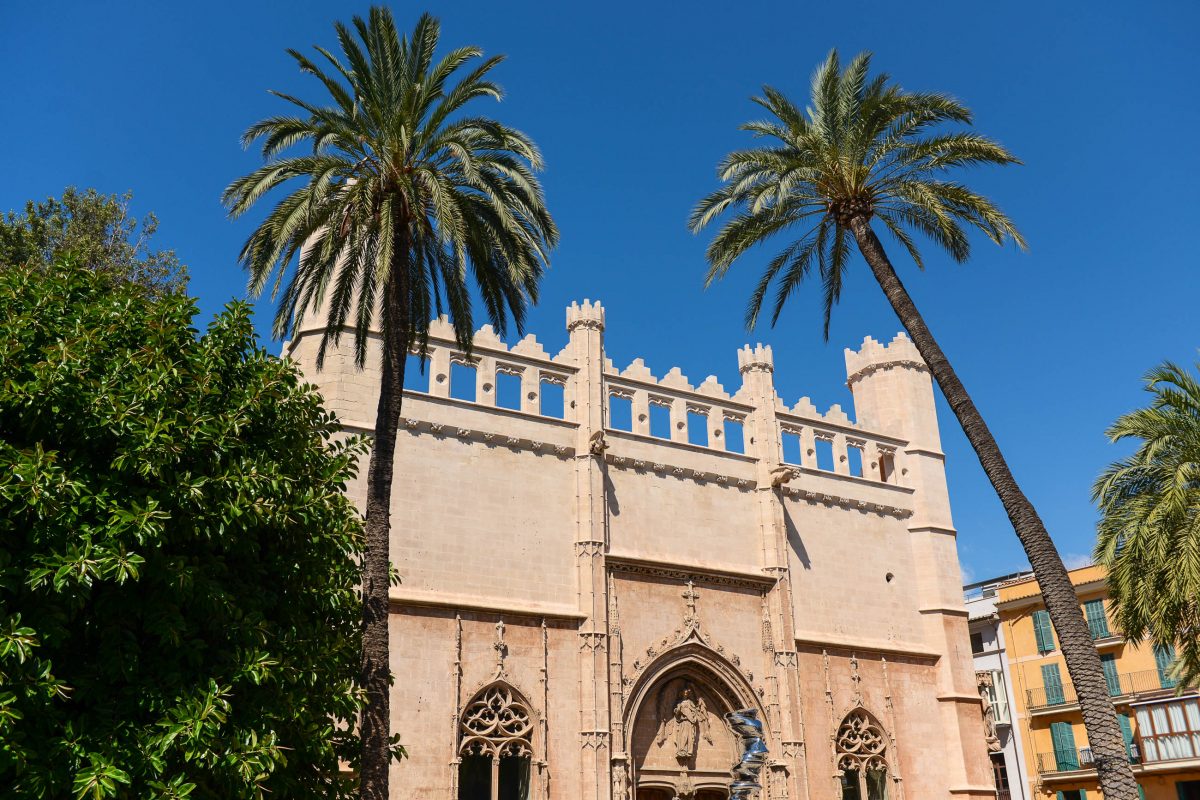
Llotja bedeutet übersetzt „Börse“ und genau dies war dieses Meisterwerk der bürgerlich-gotischen Architektur auch einst. Der Profanbau aus dem mittleren 15. Jahrhundert befindet sich etwas von der Kathedrale entfernt, an der Hafenpromenade entlang. Der aus Felanitx stammende Architekt Guillem Sagrera hat auch am Bau der Catedral la Seu mitgewirkt.
Anscheinend hat ihm die Kathedrale so gut gefallen, dass er mehrere Stilelemente der Kirche auch in die Seehandelsbörse aufnahm. Wer vor dem eindrucksvollen Bau steht, ist nicht mehr verwundert, dass Kaiser Karl V. die Llotja im 16. Jahrhundert für eine Kirche hielt.
Museen von Palma de Mallorca
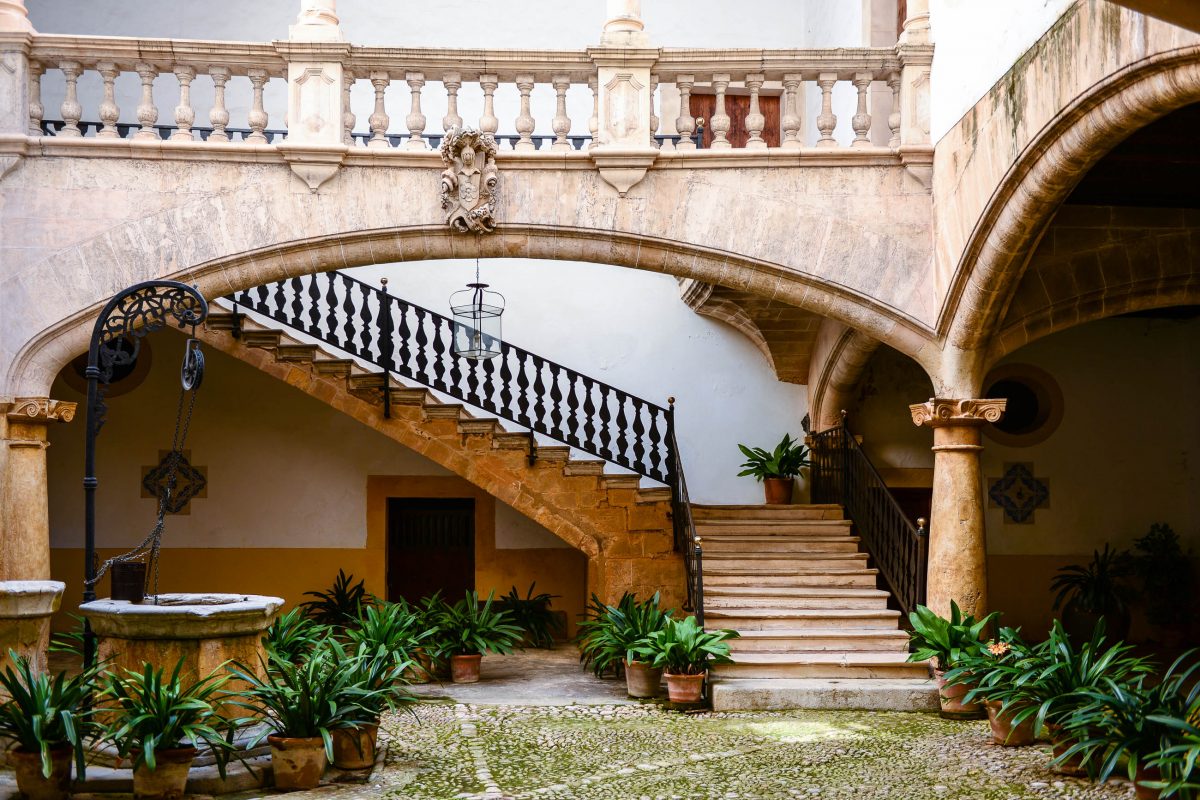
Die Altstadt von Palma kann schon fast selbst als Freilichtmuseum bezeichnet werden. Nahezu hinter jeder Ecke gibt es etwas Interessantes zu entdecken. Sei es eine der insgesamt 31 Kirchen, schmucke Torbögen, oder die etwa 150 malerischen Innenhöfe, die sich hinter den schmiedeeisernen Gittern der zahlreichen Adelspaläste verstecken.
Museu Palau March
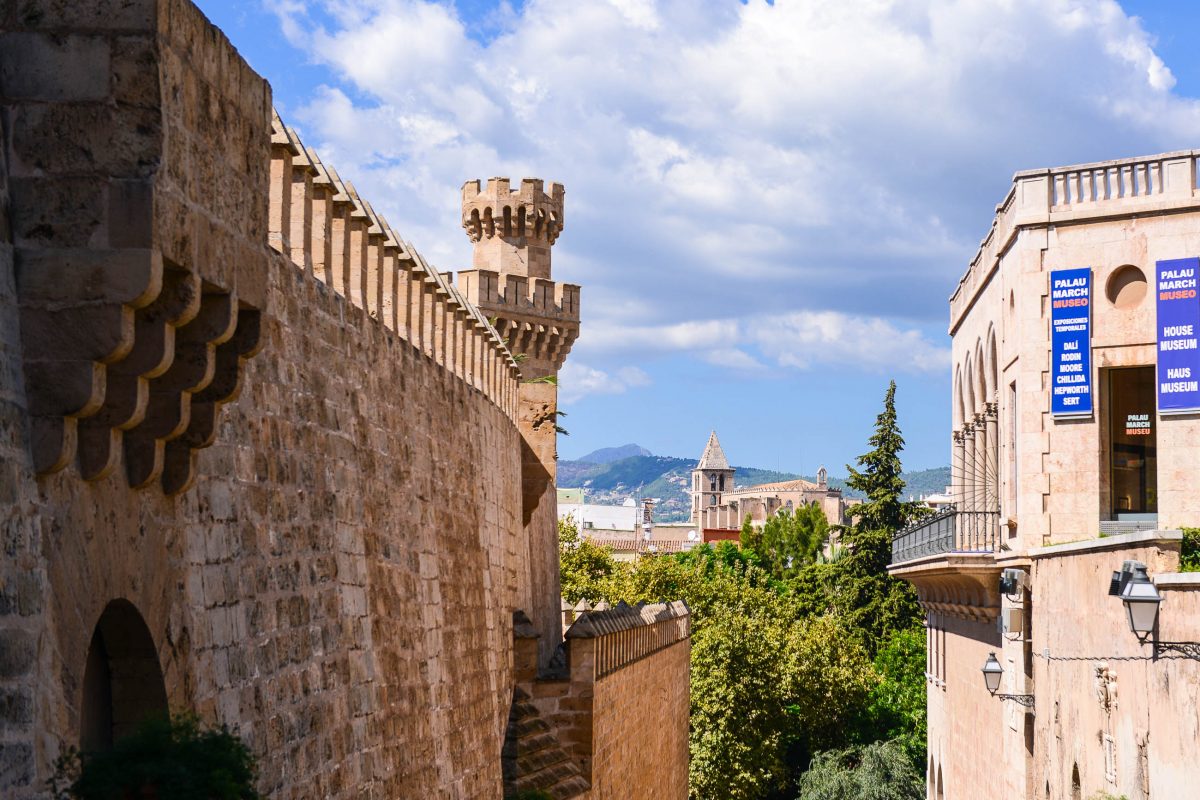
Spaziert man von La Llotja über eine Treppe wieder hinauf in Richtung Kathedrale kommt man am Museu Palau March vorbei. Die Architektur dieses prächtige Palastes erinnert zwar an das 16. Jahrhundert, tatsächlich wurde er jedoch erst 1939 von Bauherr, Bankengründer und Multimillionär Juan March inklusive prunkvoller Ausstattung in Auftrag gegeben.
Die Wandmalereien im Treppenhaus und im Musiksaal stammen vom katalanischen Meister Josep Maria Sert. Auch die Ausstellungsstücke im Museum können sich sehen lassen, darunter eine fantastische Sammlung moderner Skulpturen und eine neapolitanische Weihnachtskrippe aus dem 18. Jahrhundert.
Museu Diocésa
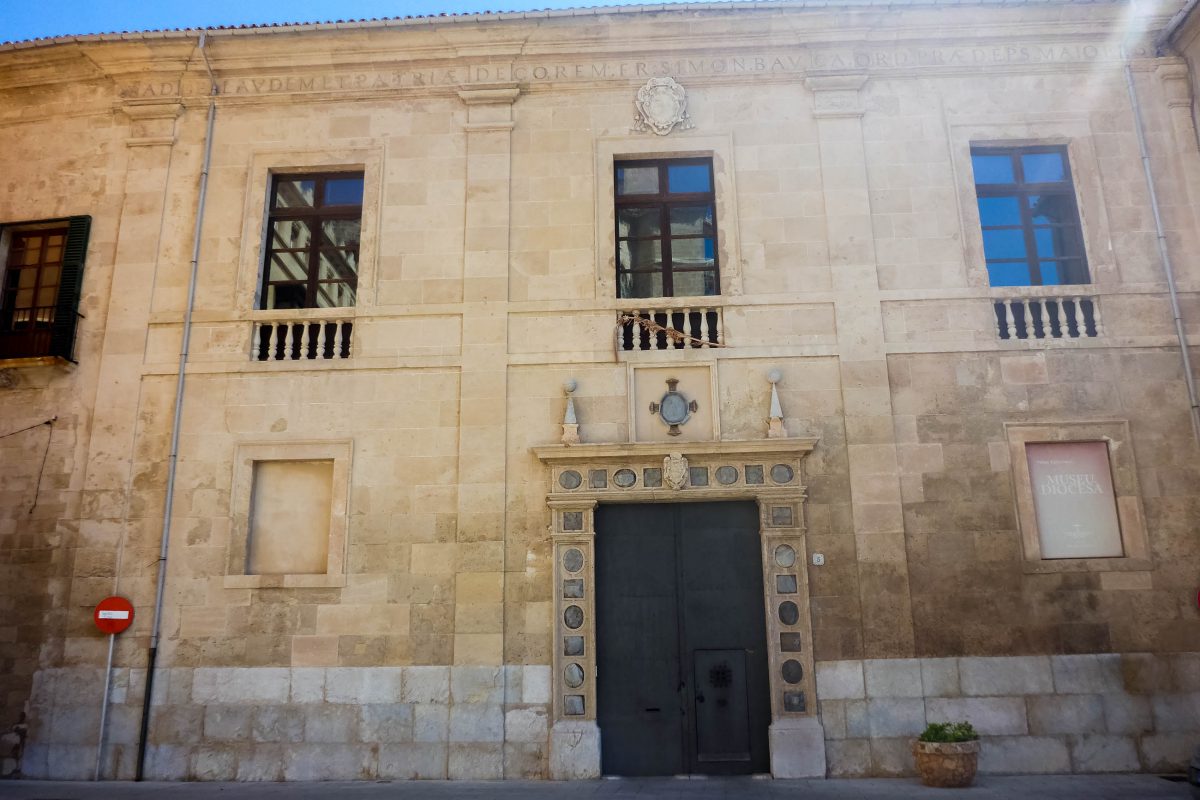
Auf der anderen Seite der Kathedrale befindet sich das Museu Diocésa, das im 13. Jahrhundert als Bischofspalast errichtet wurde. Die Glanzlichter der Ausstellung im Diözesanmuseum sind ein imposantes Gemälde des Heiligen Georg als Drachentöter vor der Kulisse von Palma, spanische Keramiken und mehrere Werke, die Gaudí für die Catedral la Seu schuf.
Museu de Mallorca
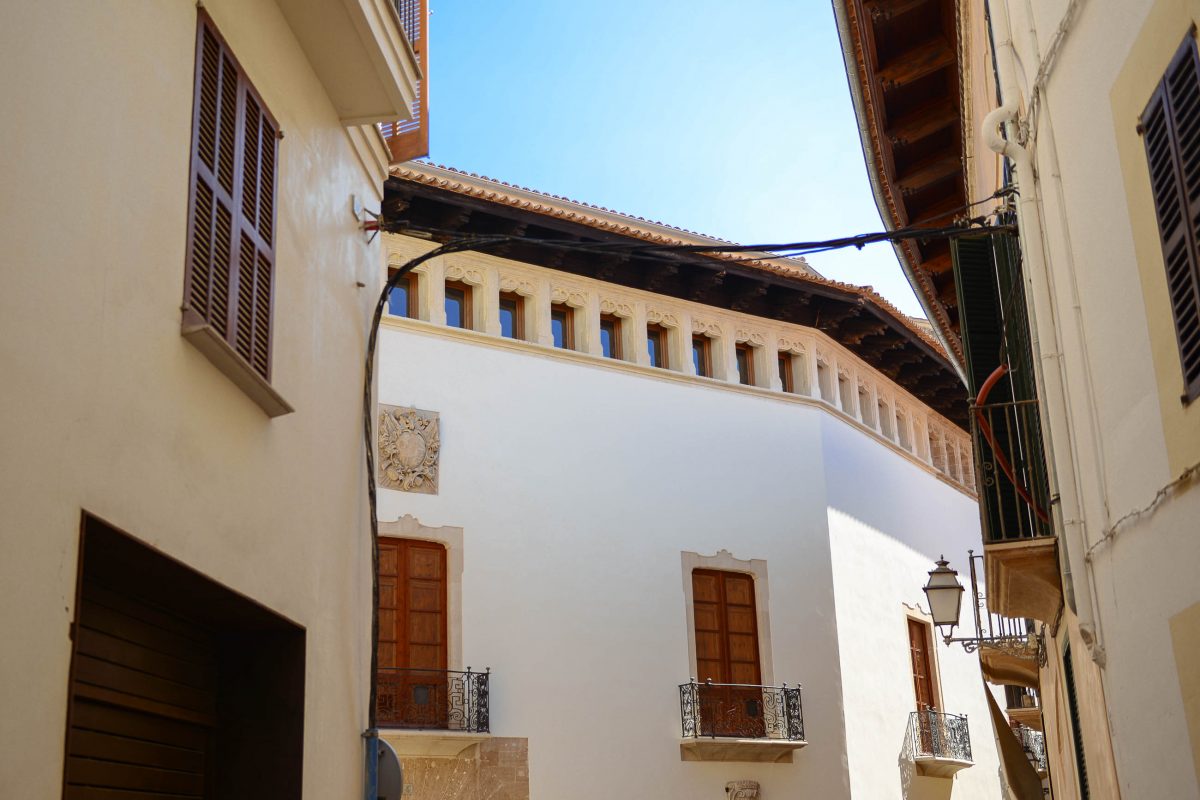
Das von außen unscheinbare Museu de Mallorca in der Carrer Portella, zwei Gassen östlich vom Museu Diocésa, ist eines der schönsten Museen der Stadt. Die Exponate im Renaissancepalast Can Aiamans reichen von der historischen Talayot-Kultur über die maurische Epoche bis zur Kunst des 20. Jahrhunderts.
Banys Àrabs
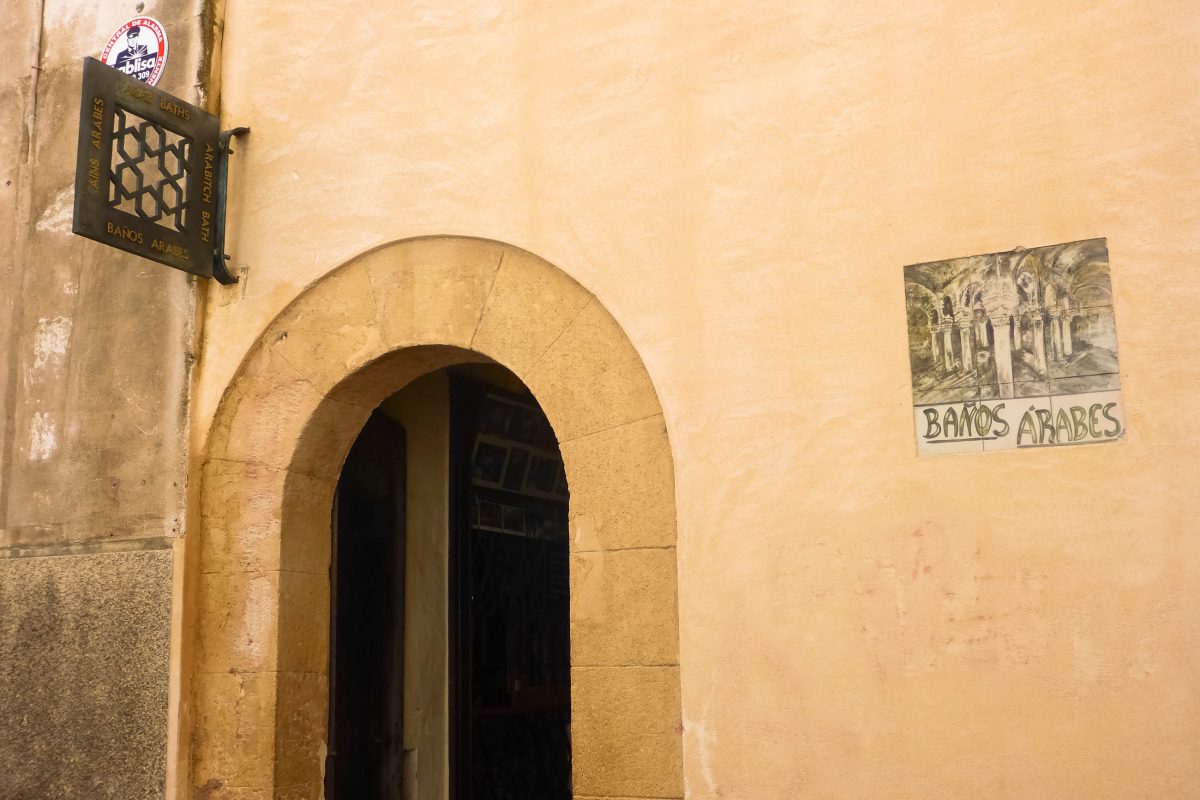
Die Arabischen Bäder liegen ganz in der Nähe des Museu de Mallorca. Sie stellen das einzig erhaltene Bauwerk aus der Maurenzeit Mallorcas dar. Wahrscheinlich reichen sie auf das 10. Jahrhundert zurück. Vom Innenraum darf man sich allerdings nicht zu viel erwarten. Bemerkenswert sind allerdings die Kapitelle der Säulen im kuppelgekrönten Caldarium. Sie sind alle verschiedenen Ursprungs und damit wohl noch älter als das Gebäude selbst.
Basilica Sant Francesc

Neben der Kathedrale ist die beeindruckende Basilica Sant Francesc die wichtigste Kirche Mallorcas. Sie wurde 1281 von König Jaume II. gegründet und im 17. Jahrhundert umfassend renoviert. Aus dieser Zeit stammt das prachtvolle Portal des berühmten Bildhauers Francisco Herrera mit dem nicht weniger imposanten Rosettenfenster darüber.
Der Punkt setzt sich im Inneren fort. Der überschwänglich gestaltete Barockaltar und der wunderschöne, spätgotische Kreuzgang sind ebenso sehenswert wie der Alabastersarkophag des mallorquinischen Philosophen und Theologen Ramón Llul.
Gleich neben dem Portal wacht eine Statue von Junipéro Serra, jenem mallorquinischen Missionar aus dem kleinen Städtchen Petra, der nach Amerika ging und San Francisco gründete.
Església Santa Eulàlia

Nur eine Querstraße weiter reckt die Església Santa Eulàlia ihren neugotischen Glockenturm in den Himmel. Das anmutige Gotteshaus ist eines der ältesten von Palma und wurde kurz nach der christlichen Rückeroberung Mallorcas als einzige dreischiffige Kirche erbaut. Die Fassade von heute stammt aus dem frühen 20. Jahrhundert und verbirgt mehrere gotische Gemälde.
Plaça Major
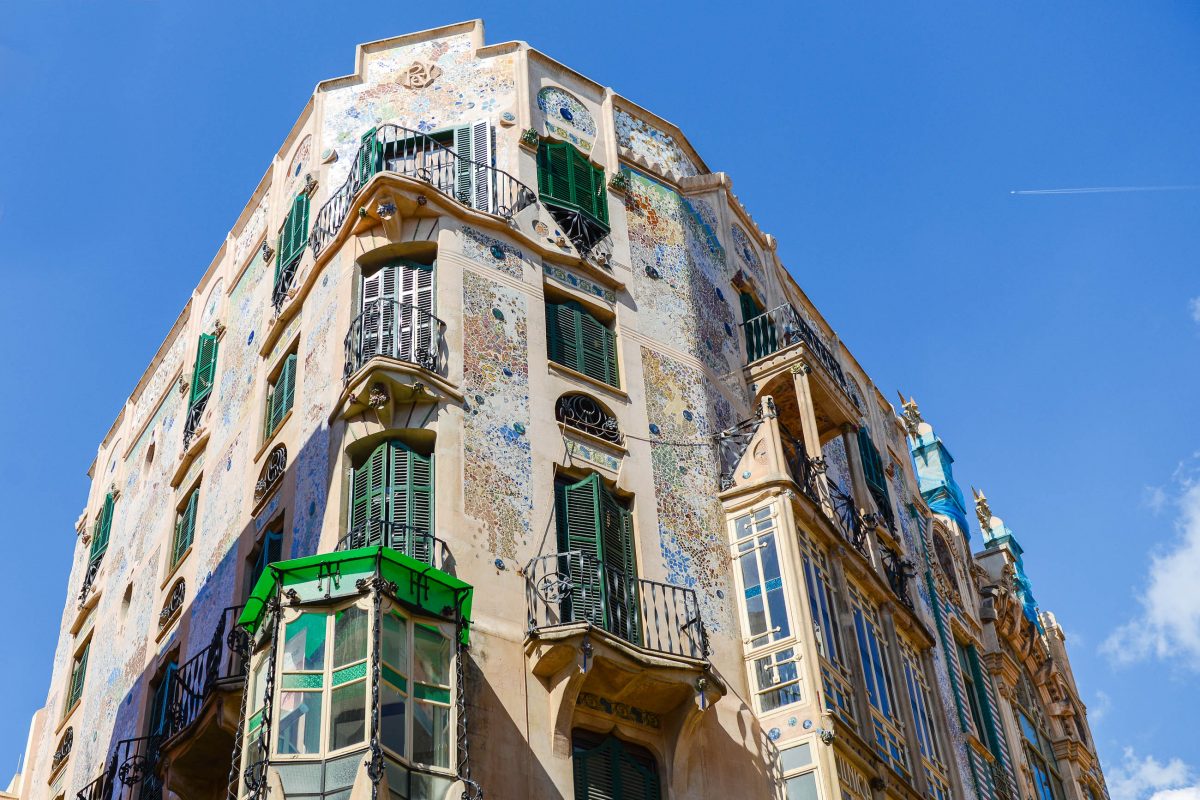
Kurz vor dem Plaça Major genau nördlich der Església Santa Eulàlia lohnt sich ein kleiner Zwischenstopp am Plaça Marquès del Palmer. Hier begeistern die prachtvoll geschmückten Fassaden der beiden Modernisme-Schönheiten L’Aguila und Can Rei aus dem Jahr 1909. Letzteres gilt als Höhepunkt der von Antoni Gaudí beeinflussten Modernisme-Bauten auf Mallorca.
Der Plaça Major selbst bildet den Mittelpunkt der Altstadt von Palma. Harmonisch von mehreren Cafés und Restaurants eingefasst spielt sich hier das touristische Leben ab. Straßenverkäufer bieten ihre Waren an und eifrige Lokalbedienstete wollen den Passanten ihr aktuelles Menü schmackhaft machen.
Unterstadt von Palma de Mallorca

Vom Plaça Major führt eine Treppe in die Unterstadt zum Theater von Palma de Mallorca. Die Stufen münden in eine größere Straße, die von mehreren sehenswerten Gebäuden gesäumt wird. Auf der linken Seite fallen die außergewöhnlich geformten Modernisme-Fassaden der Edifici Casasayas ins Auge. Die eindeutig von Antoni Gaudí beeinflussten Formen wurden im frühen 20. Jahrhundert vom Architekten Francesc Roca gestaltet.
Auf der linken Seite erhebt sich das prunkvolle Gran Hotel an der Plaça Weyler. Es stammt ebenfalls aus dem frühen 20. Jahrhundert und wurde von Lluís Domènech i Montaner, einem berühmten Vertreter des katalanischen Jugendstils, errichtet. Innerhalb der aufwändig dekorierten Außenmauern findet man ein schickes Café, eine Kunstbuchhandlung und wechselnde Ausstellungen.
Gleich gegenüber befindet sich der nächste Hingucker. Die Forn d’es Teatre ist aufgrund ihrer aufwändigen Deko im Jugendstil wohl die meistfotografierte Bäckerei auf Mallorca.
BILDER: Altstadt von Palma de Mallorca
Fotogalerie: Altstadt von Palma de Mallorca
Weiterführende Links:





